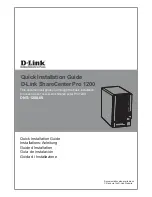
Dial In Modify window
90
Model LRA2900A RAS Administrators’ Reference Guide
7 • Dial In
Link Compression (diLinkCompression)
This object enables the PPP link layer address and protocol field compression. The following options are available:
•
enable(1)—PPP negotiations will perform link compression unless the other end of the link is unable to
work with compression
•
disable(2)—No compression will be used on the PPP link. This is the default setting
Default Max Receive Unit (diConfigInitialMRU)
This is the default setting for Maximum Receive Unit (MRU). This value can be changed by authentication or PPP.
Allow Magic Number Negotiation (diConfigMagicNumber)
Determines if magic number negotiation should be done. This access server parameter is used to check whether
a link is in a looped-back state. The following options are available:
•
enable(1)—The local node will attempt to perform Magic Number negotiation with the remote node.
•
disable(2)—Magic Number negotiation will not be performed.
In any event, the local node will comply with any magic number negotiations attempted by the remote node,
per the PPP specification. Changes to this object take effect when the link is restarted.
For more information, see Section 7.6, "Magic Number," of RFC1331.
Frame Check Sequence Size (diConfigFcsSize)
The size (in bits) of the frame check sequence (FCS) that the local node will generate when sending packets to
the remote node. This setting becomes active when the link is in the up—able to pass packets—operational
state (for more information, refer to “Operational Status (diIpOperStatus)” on page 105).
Compression (diIpConfigCompression)
Determines whether the local node will attempt to negotiate IP compression. The following options are available:
•
none(1)—The local node will not attempt to negotiate IP compression
•
vj-tcp(2)—The local node will attempt to negotiate compression mode indicated by the enumerated value
Changes to this object take effect when the link is restarted.
For more information, see Section 4.0, "Van Jacobson TCP/IP Header Compression" of RFC1332.
MultiLink (diConfigMultilink)
MultiLink enables a user to connect using multiple channels. This enables dial-up users whose equipment sup-
ports MultiLink PPP or multi-channel ISDN to use multiple channels to get higher data transfer rates.
Set the
MultiLink - Max # of Calls per User
parameter to the maximum number of channels a user can take for
a single connection. Setting the parameter to 0 disables the MultiLink option.
MultiBox (diConfigMMP)
MultiBox enables a user to have multiple connections even if the subsequent call for an additional channel is on
a different access server from the originating channel (bundlehead). MultiBox is useful when a single number
called by a user accesses multiple T1/E1s and subsequently different access servers.
Summary of Contents for LRA 2900
Page 29: ...Contents Model LRA2900A RAS Administrators Reference Guide 29 ...
Page 33: ...About this guide Model LRA2900A RAS Administrators Reference Guide 33 ...
Page 63: ...5 Authentication Model LRA2900A RAS Administrators Reference Guide 63 Modify Static User ...
Page 72: ...72 Model LRA2900A RAS Administrators Reference Guide 7 Dial In ...
Page 201: ...16 MFR Version 2 Model LRA2900A RAS Administrators Reference Guide 201 ...
Page 211: ...16 MFR Version 2 Model LRA2900A RAS Administrators Reference Guide 211 MFR Version 2 Modify ...
Page 268: ...268 Chapter 22 About Chapter contents Introduction 269 Black Box contact information 269 ...
Page 273: ...23 License Model LRA2900A RAS Administrators Reference Guide 273 End User License Agreement ...
Page 278: ...278 Appendix B MIB trees Chapter contents Model LRA 2900 MIB Tree Structure 279 ...
















































